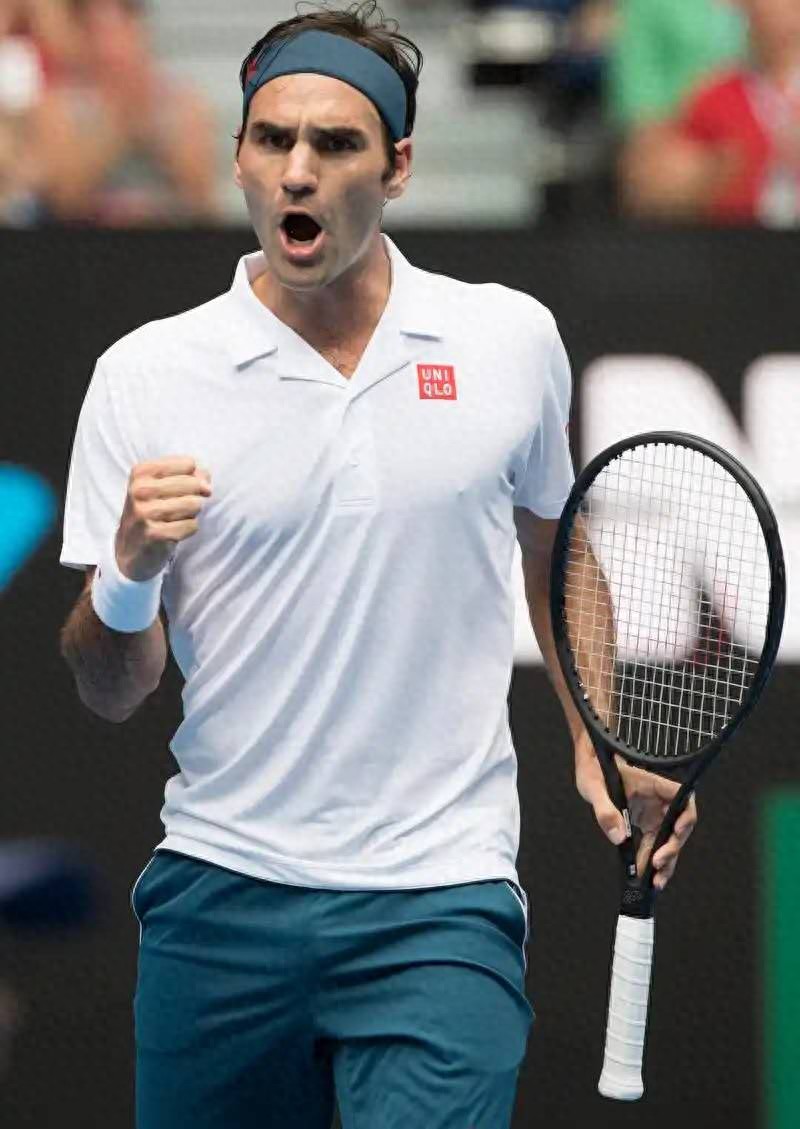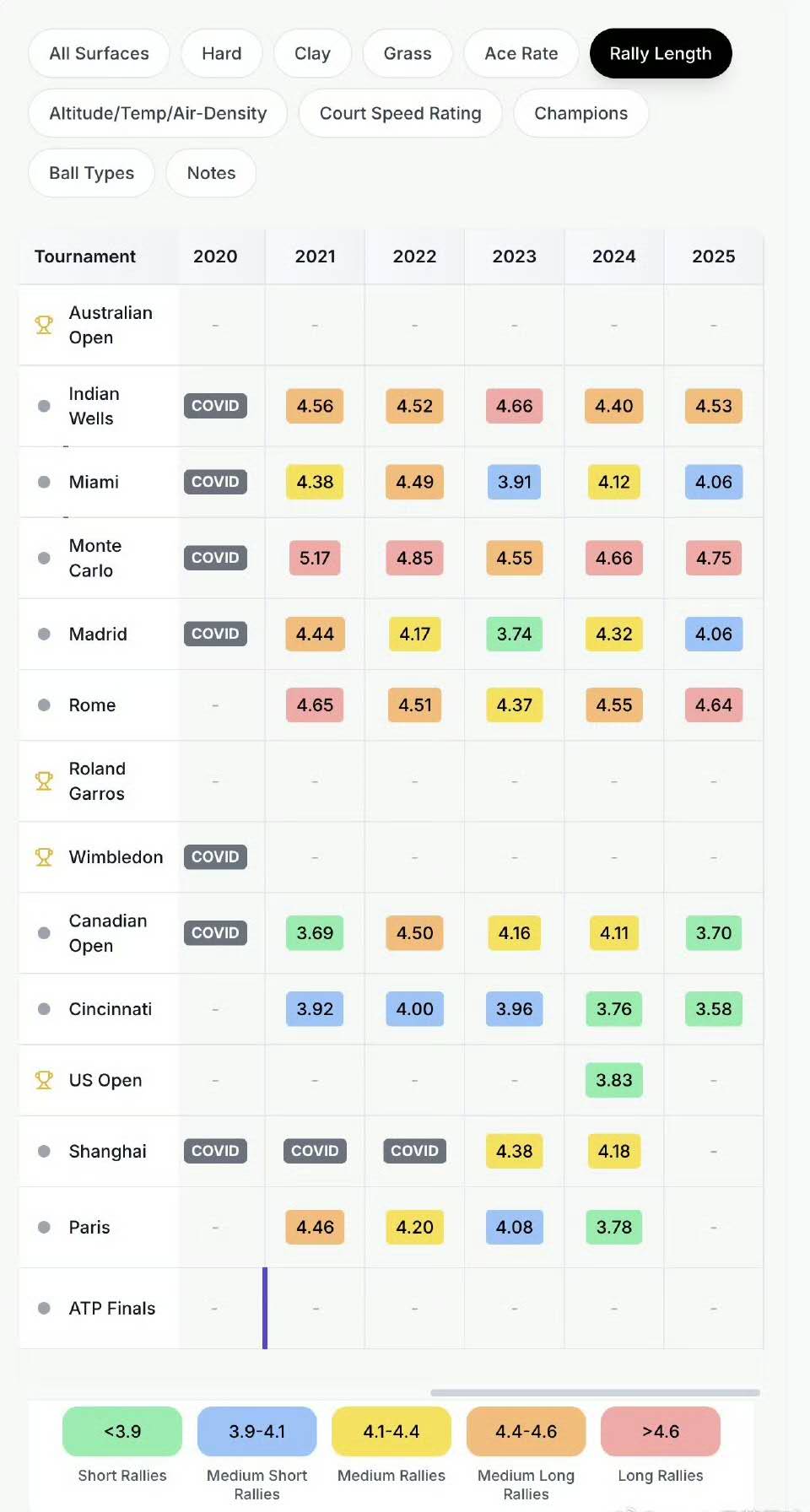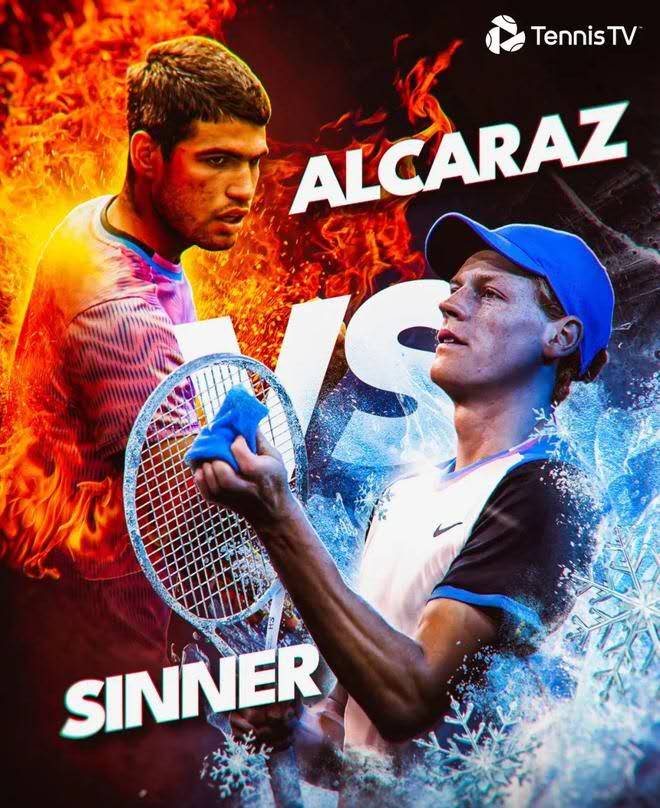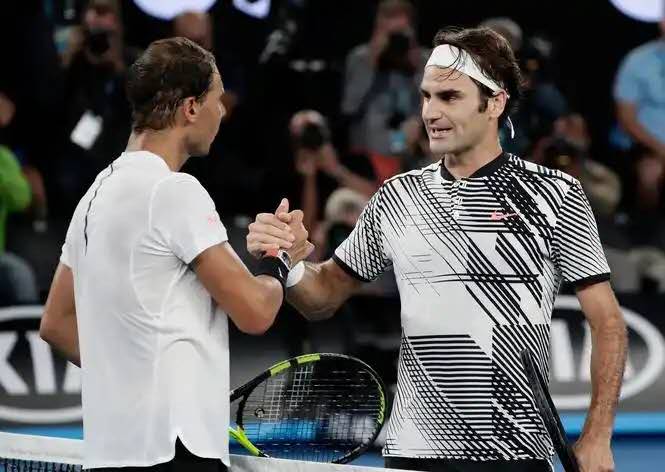Federer: The reduced court differences allow Sinner and Alcaraz to easily dominate Grand Slams with a single playing style
This year, the Grand Slam titles were once again claimed by the tennis twin stars, marking the official arrival of a new era dominated by these "two giants" in tennis. However, Swiss legend Federer believes this dominance essentially stems from the diminishing uniqueness of tennis courts, a change that may not be entirely positive for the sport. His critique of the increasingly homogenized court speeds has sparked widespread discussion.

"In my era, there was a huge difference between courts. Sometimes, we wouldn't even meet on the same surface! That’s what created those thrilling battles. This change makes tennis easier for the general public to understand but might be less exciting for purists," Federer recently said on Andy Roddick's podcast, directly addressing a core issue in today's tennis.
The Swiss star believes tournament directors intentionally reduce the speed differences between courts to ensure top players like Alcaraz and Sinner meet more often in finals.
He stated, "Obviously, I understand the intention of tournament directors trying to slow down court speeds. It's beneficial for players who need to hit extraordinary winners to beat Sinner because on faster courts, they might only need a few quality shots at key moments to win. But the directors say: I want to see Sinner and Alcaraz in the final more often."

Federer's analysis hits the mark: the narrowing of court characteristics directly leads to a convergence in playing styles, allowing Sinner and Alcaraz to prepare for the next Grand Slam with almost no tactical changes.
"Nowadays, every tournament feels the same week after week. That’s why our tournament directors need to address this. We want fast courts but also want to see Alcaraz or Sinner respond with lightning speed and then try the same on a super slow court to see what happens. This is because directors allow court and ball speeds to be nearly identical every week, which is why you can win the French Open, Wimbledon, and the US Open playing the same way," Federer revealed the core dilemma tennis faces — balancing popularization with professionalism.

Clearly, in Federer's view, the speed and differences of tour courts are shrinking. In the past, we often saw "clay-court specialists collapse on grass" or "fast hard-court players struggle with the irregular bounces on grass and clay." This was because players had to employ different tactics on different surfaces. For example, on clay, more topspin is needed to increase ball hang time and gain time for positioning. Additionally, topspin makes shots more aggressive and deceptive on clay.
However, today, standardized court speeds have greatly influenced Grand Slam outcomes. Many players no longer need much time to adapt to different surfaces. With the continuous slowing of the US Open and Wimbledon courts, more players can enter Grand Slams with "zero warm-up" since the courts are almost indistinguishable from hard courts, and play styles hardly differ. This contrasts sharply with early in Federer's career when players needed to adjust tactics and even techniques for different surfaces.

Yet, the data tells a more complex story: In the 2025 Monte Carlo Masters (slow clay), the ace rate was only 5.3%, while the Cincinnati Masters (fast hard) had 12.3%. Monte Carlo averaged 4.75 shots per point, Cincinnati 3.58. This shows court differences still exist, so why does Federer feel otherwise?
We can look at 2025 season data for clues; for example, ace rates at the French Open hover around 6%, while Wimbledon is about 12%. Average shots per point show similar trends.

Table: Key data comparison across different courts in 2025
Tournament Ace Rate Average Shots per Point Court Type
Monte Carlo Masters 5.3% 4.75 Slow Clay
Cincinnati Masters 12.3% 3.58 Fast Hard
Wimbledon ≈12% Data Missing Grass
French Open ≈6% Data Missing Clay
Although differences remain, compared to Federer's era, the gap between courts has clearly narrowed, enabling all-rounders like Alcaraz and Sinner to maintain consistent competitiveness across surfaces.

Alcaraz and Sinner’s technical versatility is astonishing, and this nearly flawless skill set has become the mainstream in men’s tennis today. Andre Agassi once praised Alcaraz as a "fusion of the 'Big Three'," and this all-around style allows them to excel on courts of all speeds.
In 2025, Alcaraz and Sinner dominated three Grand Slam finals (except the Australian Open). Their dominance recalls historic rivalries: Edberg vs. Becker in 1990, Federer vs. Nadal in 2006, and Nadal vs. Djokovic in 2011.

Unlike their predecessors, Alcaraz and Sinner have succeeded on all court types. They have faced each other in finals on clay, grass, and hard courts — a versatility unimaginable in an era with more distinct surface characteristics.
Additionally, besides technical versatility, today's tennis is also defined by power and speed. About 70% of points end within 0-4 shots, highlighting the unprecedented importance of serve and the first three strokes. On fast courts, serve and forehand dominate, leaving little room to alter playing style.

The evolution of court speeds is not a new topic. Back in the 2017 Australian Open, analyses noted the court was speeding up. Then world No.1 Murray and defending champion Djokovic exited early, partly due to the faster courts affecting their defensive styles. Zverev, who defeated Murray, frequently used serve-and-volley tactics with high success — a typical fast court strategy. Nadal had also noticed the Melbourne Park courts speeding up and expressed confusion over the organizers' changes.
Federer's preference for faster courts has long been evident. After losing to Djokovic at the 2012 London ATP Finals, he said, "Making courts faster makes defense harder. An attacking style becomes more important, and only on slower courts do we see what we have now."
Sharing Federer's view, former world No.12 Feliciano López, the Spanish veteran, also pointed out that "the slowing down of all court types" has led to a lack of "distinct player styles" nowadays.

Currently, medium-speed hard courts dominate men's tennis, with major events from the Australian Open to the US Open, Paris Masters, and ATP Finals all held on such surfaces.
While this trend ensures match consistency, it may weaken tennis's diversity. Historically, different court types fostered varied technical schools and playing styles — from baseline rallies on clay to serve-and-volley on grass — a vital part of tennis's cultural heritage.
Is the convergence of court speeds tennis's evolution or regression? Federer's suggestion remains worth pondering. For fans, we should also look forward to seeing players' comprehensive adaptability, as only then can tennis's diverse charm be fully displayed.(Source: Tennis Home, Author: Lu Xiaotian)







 Links
Links
 Contact
Contact
 App
App


